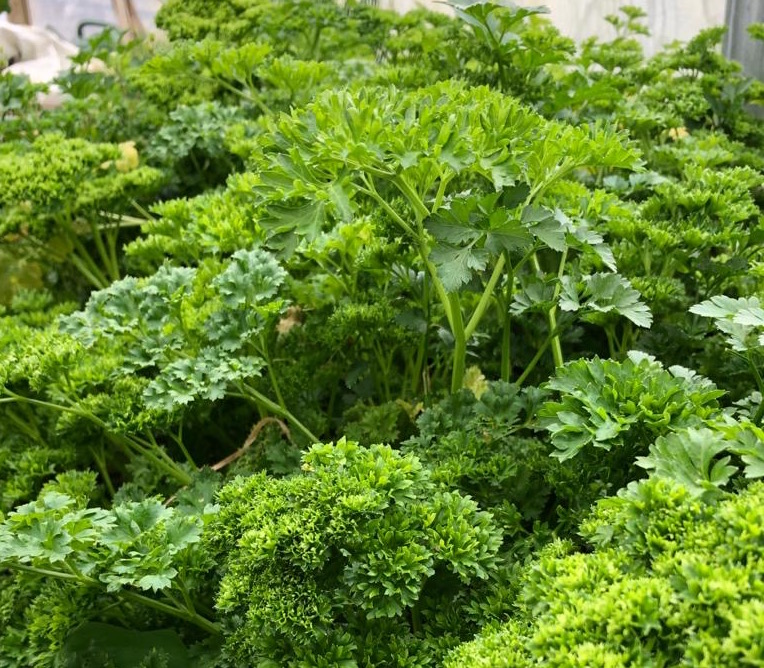
Here we are at the August Bank Holiday and no one can deny that the glorious explosion of summer garden colour is behind us. But early autumn has its real joys too!
Don’t forget to savour them as we get on with tasks like sowing some parsley, nurturing self-sown seedlings and picking up bargains…….
Cut-price plants
Doncha just love a bargain?! The end of summer is often a great time to go bargain-hunting in garden-centres and nurseries who are keen to clear stock. Here are a few tips from someone who’s done this before…….
a) Don’t bother with annuals and bedding plants, unless they are more or less free, or you are desperate for a short-lived splash of colour. They are probably still in titchy pots or modules and will never do anything much before they die in late autumn.

b) Cut-price pots of grasses can look pretty manky and dead, but if you can see a few green shoots among the brown ones, they can often be revived very well indeed. Give it a new larger pot, food, water and a severe trim, and you can work wonders with these.

c) Another very good buy can be early-flowering summer perennials or shrubs, including roses. Anyone who works in the horticultural industry knows that if a plant has flowers on it, it’s more likely to sell quickly. Once that seasonal display is finished, such plants may well be cheaper, and still in very good condition.
d) Look out for perennial plants that you can divide into smaller pieces – cranesbills, astrantias, hostas etc. – once you get them home.

e) Avoid anything in compost that has dried out completely or whose stem looks very weak or rotten. In my experience, they are almost impossible to turn into good garden plants, and you don’t want to end up with a garden full of lame ducks.
f) Stuck in the same pot for ages, trees and shrubs will probably have roots going round and round the base – be a bit ruthless with these, pulling them apart and even cutting some, to encourage them to branch out into your garden soil. Keep them well-watered for the first year. This was what I had to do with my best-ever cut-price purchase – a Liriodendron (tulip tree) which was only a tenner. Fifteen years on, and it’s the finest tree in my garden !

Parsley for the winter
Parsley is one of those ridiculously handy herbs. I’m no cook, but my culinary whizz of a husband uses it for loads of different dishes.

If you sow parsley seeds now, you can keep your supply going all winter. Sow quite a lot of seed because they won’t regrow leaves once you have started harvesting.
Soak the seeds for 24/36 hours to aid germination (which can be slow, I warn you). Just sprinkle the seeds over a seed tray of compost, then sprinkle with sieved compost, and put the tray into a shallow container of tepid water. Take it out once the surface looks wet.

Leave the seed tray in a warm place to germinate (might take three weeks) A piece of clingfilm over the top will help conserve warmth and moisture. Once the seedlings are big enough to handle, plant 4-5 to a pot to pick through the winter, but be gentle with them – they don’t enjoy root disturbance much.
Parsley is a hardy biennial so the plants can go outside, or otherwise inside in good light, for ease of harvesting. Chervil with its delicately-aniseed flavour is another bone-hardy herb you can sow now.
Gardening shorts
- Do put some supports in for your autumn stars. Dahlias, tall asters and the like will really appreciate a bit of help to show off their blooms. How about a simple framework of twine and canes which becomes obscured as the stems grow through them.

- Keep your chard and perpetual spinach going by cutting out any stems that are running up to flower (‘bolting’). I was reading the other day that in autumn, you can even pot up the crown and roots of chard plants (having cut away all the foliage) to bring under cover. They will yield you useful leaves through the winter and early spring.

- I love finding little self-sown seedlings of my plants. I tuck them up into little pots of multi-purpose peat-free compost, water them and keep them in a shaded area to grow on or be planted out.
My lovely cardoon revelled in last year’s scorching summer. It’s gorgeous flowers (see today’s feature pic) responded to the heat by developing properly viable seed (it even started to germinate in the old seed-heads!). I potted the seedlings on, planted them out this spring, and they are now well on their way to forming a rather exciting informal hedge!

- When you have time, keep turning over the compost heap. Its optimum ingredients are annual weeds and soft plant stems, uncooked veg waste, crushed eggshells, grass clippings and shredded paper. They each bring something slightly different to the party, and by mixing all of these things up, you will very helpfully be speeding up the whole composting process.

Laura’s been taking a stroll round some of her late flowering summer shrubs this week and you can see which ones she’s enjoying in the little 2 minute video she made.
More NB If you’re not already a subscriber and you’d like a bit more gardening chitchat from the3growbags, please type your email address here and we’ll send you a new post every Saturday morning.

So many sedums to choose from at this time of the year but this one has something special, click on the image to read about Louise’s Great Plant this Month
